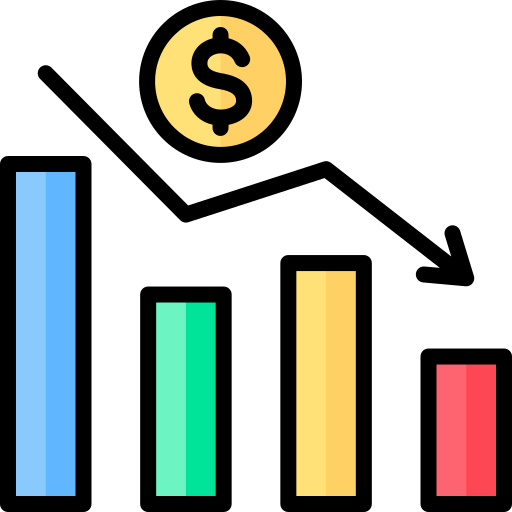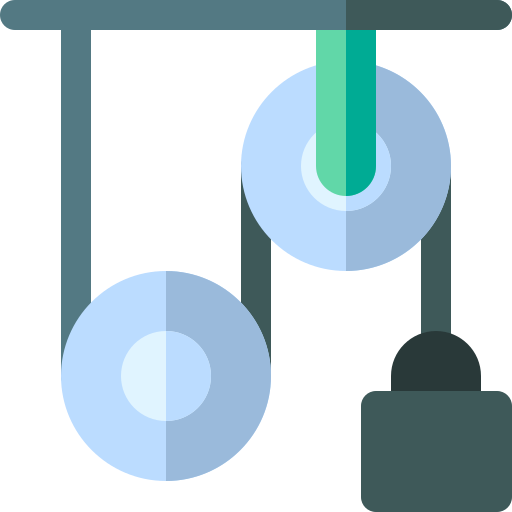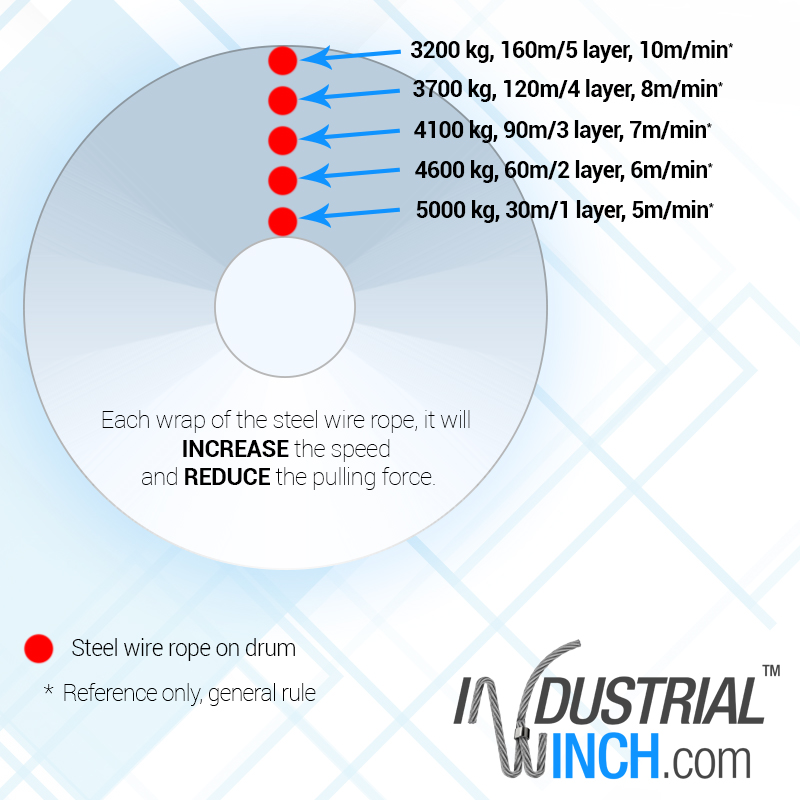Price does not work wonders

Choosing the right winch is not difficult, however, there are a few key points to look after in order to save money and gain reliability of the unit's operation.
The main mistake we see our customers make when selecting a winch is choosing a machine with too much pulling or lifting force for the task at hand. This stems from previous bad experiences with far-eastern equipment and lack of knowledge, especially in the field of pulling loads. Another key factor is ignoring the assumed duty classification groups (ISO/FEM).
Therefore, it is difficult to expect failure-free operation of the machine, when used continuously or very often, if it was intended for sporadic use. As a result, we may have two winches with a lifting capacity of e.g. 5000 kg and a price difference of up to 70%. One of them designated for continuous operation, e.g. (S1/M8), and the other for occasional operation, e.g. (S3/M2)
Unfortunately, very often the first or the most important selection criterion is the price, therefore, in order to save yourself problems in the use of winches, you should choose a device according to its work frequency guidelines. Such approach will guarantee failure-free work for many years.
Lifting loads
Lifting loads in relation to cost reduction - advantages

In the search for savings without loss of quality, we often advise our customers on a simple solution that multiplies the lifting force. This is not always possible due to a lack of technical conditions required for its adaptation or other specific technological conditions on the worksite. We are talking about utilizing single or multiple snatch blocks.
As a reminder, each snatch block doubles the lifting (or pulling) force and reduces the speed by half. Thus, if we have a winch with a lifting force of 5000 kg, we can increase the lifting capacity up to 10000 kg or 20000 kg. So you can buy a 5-tonne unit rather than a 20-tonne unit. The difference in the purchase price of the winch will be significant
Another very important opportunity for price reduction is related to the lifting capacity resulting from the number of rope layers on the drum. However, this topic requires a separate explanation later in this article.
 Disadvantages
Disadvantages
Unfortunately, this solution also has disadvantages. An additional structure is needed for the blocks to be installed. At the same time, the decrease in speed may be unacceptable for the customer and paralyse the work of the plant. One of our large customers in Plock, Poland, relied exactly on such a solution; in his case, the slower it worked, the better. As a result, he was lifting tens of tons at speeds below 1 m/min, which was technologically required there.
When it comes to lifting loads, or more precisely lowering them, it is worth mentioning the inverter. If the lifting speed is to be variable or the load is to be gently "taken off", the winch must be fitted with an inverter. The inverter must be picked up by installed braking resistors due to the current generated when the load is lowered. Unfortunately, the costs for an inverter for lifting loads are considerably higher than for an inverter for horizontal pulling, precisely because of the need to install braking resistors.
Pulling loads horizontally
Pulling loads in relation to cost reduction
When pulling loads, it is useful to know two basic principles when selecting a winch:
- If the load is to be dragged on a track, and so it is equipped with steel trolley wheels, then we need 3% of its weight to drag it.
- If the load is pulled over concrete, on a trolley with rubber wheels, we need 12% of its weight to pull it.
Very often in discussions with customers, I use a simple example of a faulty mental assumption. Case in point. A customer has a 1500 kg load on a trolley riding on concrete and wants to buy a winch...adequately with 1500 kg of pulling force.
When asked why would he want a 1500 kg winch, the most common answer is that the load weighs that much, or that since the winch is rated for 1500 kg , it should probably do just fine with 500 kg. Here you can see the strong influence of our customer's far-eastern experiences.
In fact, when we tell a customer the truth, that he needs max. 180 kg of pulling force (12% of 1500 kg) we are met with disbelief or even outrage. Then the definite argument comes into play. Aren't you able to push your own passenger car down the street...?
Of course, you can also pull the load without using wheels, by sliding the two parts together. Sometimes the load is also dragged at a certain angle, in which case the calculation is slightly different, but never done using the full weight of the load, only its percentage.
Load capacity - less means more
Example 1
- "Good afternoon, looking for a winch capable of directly lifting a 5 tonne load, to a height of 20 metres. I've no need for no snatch blocks and speed is of little importance."
To better understand the operating principles of a winch, and more specifically what lifting capacity means, we need to imagine the winch drum without the rope. Now with the eyes of our imagination, let's wind up the first layer of rope. Depending on the width of the drum, this first layer may have only a few metres of rope, but there are drums so wide, that they may hold up to 100 metres of it.

For the sake of simplicity, let us now imagine a standard drum with a capacity of 160 metres of rope. These 160 metres of rope will be wound, creating 5 layers, one on top of the other. Each layer in our example will therefore have approximately 25 metres of rope.
For our winches, a lifting capacity of e.g. 5 tonnes means that the winch has 5 tonnes of pulling force on the first layer. When we wind the second layer, the lifting capacity drops to approximately 4600 kg, however, the winding speed increases. When we wind up the third layer, the lifting capacity drops again by another 500 kg, and the speed increases even further. As a result, after winding all 5 layers of rope, we will be dealing with a pulling force of about 3200 kg.
In such a case, in order to reduce costs, we would make a drum capable of 20 m of lifting height. The customer has no need for a drum equipped with a high flange for storing 160 m of rope.
Example 2
- "Good afternoon, I am looking for a winch capable of directly lifting a 5 tonne load, to a height of 80 metres. I've no need for any snatch blocks and speed is of little importance".
With this in mind, the situation will change slightly this time. The customer has to get a machine with an initial pulling power of 6500 kg in order to have a minimum of 5000 kg of lifting capacity using 3-4 layers of rope. So as you can see from the examples above, the key information in selecting a winch is the lifting capacity and the lifting or pulling height. These two values are critical when selecting a motor or drive type in general, in order to maintain the required performance parameters.
To meet the expectations of our customers, available on our website interactive winch selection catalogue, takes into account the aforementioned factors in the process of selecting the device. You do not have to calculate anything. Just choose the type of power supply, pulling force and rope length. The system selects the most appropriate solution based on logic and economy of the proposed solution.
Winch drives
Electric winches
By far the most popular drive is the electric one. Our offer includes devices with single-phase (230 V) and three-phase (400 V) motors.
 Advantages of one phase motors
Advantages of one phase motors
- For winches, the main advantage of this type of motor is the availability of power supply;
- According to Polish law, single-phase electric winches are not subject to the Office of Technical Inspection unless their load capacity exceeds 1000 kg.
 Disadvantages of single phase motors
Disadvantages of single phase motors
- Limited lifting capacity, usually not exceeding 2000 kg;
- Limited speed at the expense of lifting capacity, or limited lifting capacity at the expense of speed;
- Electrical instability. Single-phase hoists are susceptible to voltage fluctuations in the grids;
- No possibility to apply an inverter.
 Advantages of 400 V three-phase motors
Advantages of 400 V three-phase motors
- Practically unlimited lifting capacity of up to 100 tonnes of direct thrust;
- Winding speeds of up to 200 m/min;
- Electrical stability;
- Expandable with inverters and other electrical components;
- ATEX certification possible (explosion-proof design)
 Disdvantages of 400 V three-phase motors
Disdvantages of 400 V three-phase motors
- Availability of electrical connections;
- Office of Technical Inspection approval is always required for load lifting, regardless of the capacity.
Hydraulic motors
Winches equipped with hydraulic motors are most often used in the marine industry, but also offshore and in the land-based industry.
Customers usually choose this type of equipment due to the possibility of connecting to already existing "power packs", i.e. hydraulic power units.
 Advantages of hydraulic motors
Advantages of hydraulic motors
- Lower fire risk;
- Winches are smaller in size compared to electric winches;
- Durability;
- Simplified ATEX certification;
- High starting torque.
 Disdvantages of hydraulic motors
Disdvantages of hydraulic motors
- Requires specialist repair and maintenance knowledge;
- Sensitive to air lock;
- No possibility of using advanced electrical control solutions.
Pneumatic drives
This type of drive is mainly used in the mining industry due to its explosion-proof properties. Of course, other branches of industry also use this type of drive in order to take advantage of their existing air supply for the winch.
 Advantages of the pneumatic drive
Advantages of the pneumatic drive
- There is a choice between piston and vane motors. Piston motors are characterized by higher efficiency and robustness.
- Particularly suitable for areas requiring ATEX protection;
- High tolerance to temperature fluctuations;
- Relatively low purchase costs.
Disadvantages of the pneumatic drive
- In the case of pneumatic winches, they are negligible
Labour factor - the philosophy of quality

When choosing a winch, or in fact any device, it is difficult for us to draw conclusions about quality on the basis of price alone or the "packaging" of a product we do not know.
So we are also guided by the opinions of others. Unfortunately, in the case of devices such as industrial winches, it is difficult to look for reviews from friends.
A winch is not only a motor, a rope and a drum. Also important is the most expensive part of the winch, which is the gearbox. This is where manufacturers look for savings.
It is therefore possible to produce an 'A' winch and a 'B' winch with the same parameters, i.e. load capacity and speed. Decision makers, having several offers on the table, each matching the technical parameters, will choose if not the cheapest offer, then one not far away.

The final price of the winch, in addition to the examples and descriptions described in this article, is also affected by the ratio of the gearbox to the motor. If, out of a desire to save money, we use a gearbox that is matched 1:1 to meet the performance of the winch, the mechanical life of the winch decreases very significantly. In our company we do not save on components, especially not on the most expensive ones, the selection of which makes us forget about the warranty problems of our winches.
We strive to ensure that each gearbox in a winch is "oversized" by a ratio of 1:1.8, allowing our customers peace of mind, not only during the warranty period, but long after.
"The bitterness of poor quality remains long after the sweetness of low price is forgotten" - Benjamin Franklin
We hope that the explanations contained in this article have been helpful and that you will be able to make an informed choice of your device. Should you have any further questions, please contact us via our contact form.
